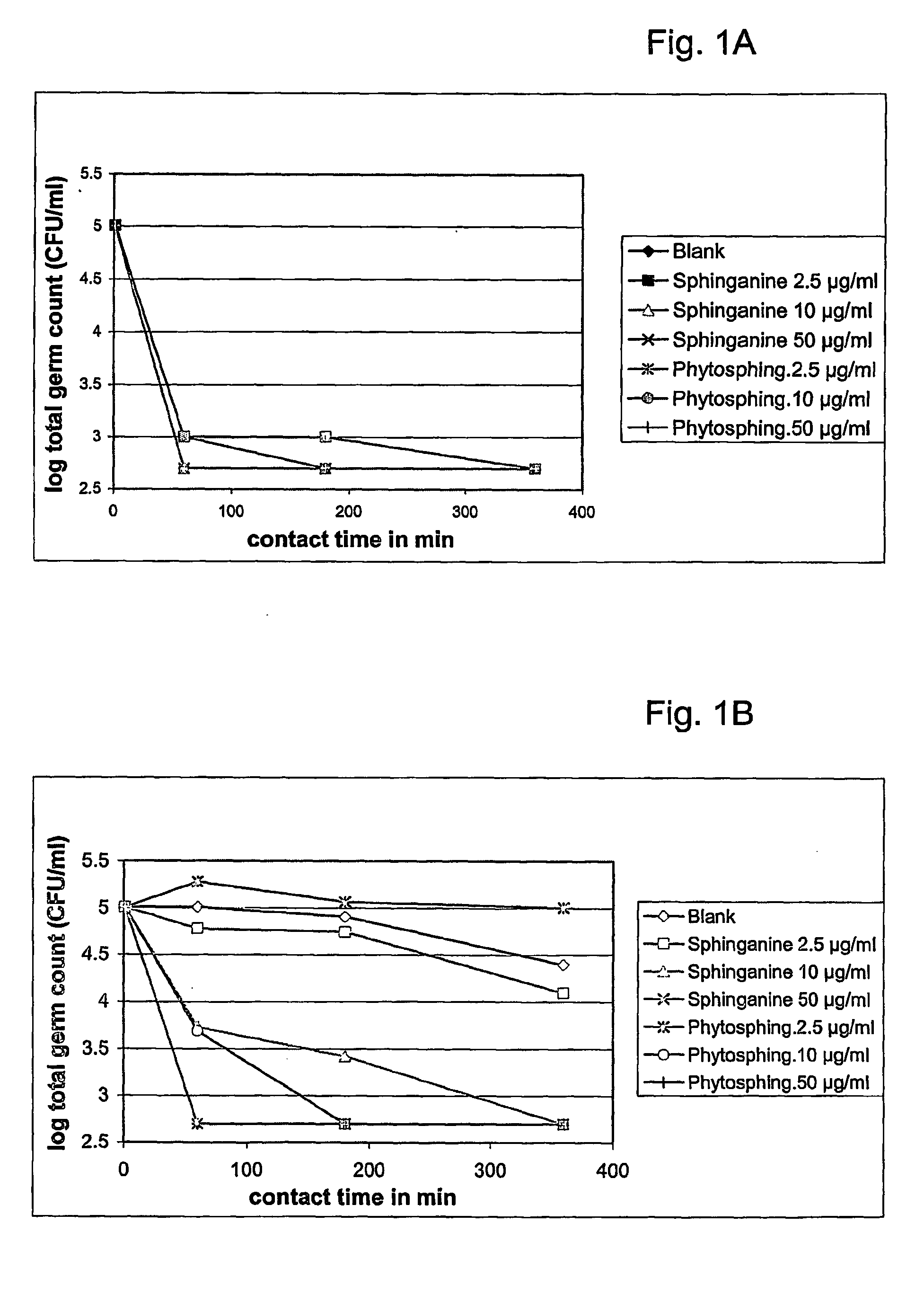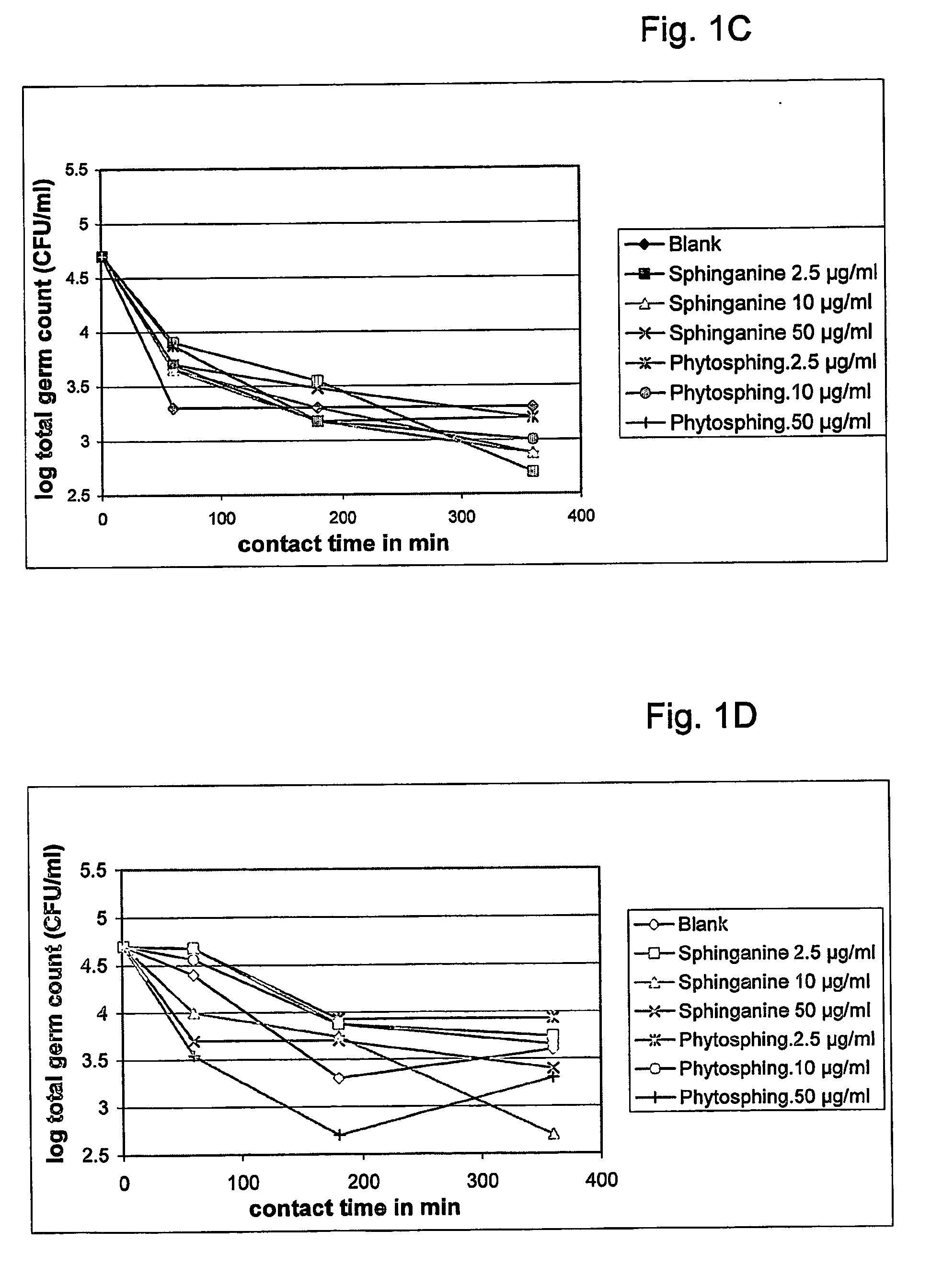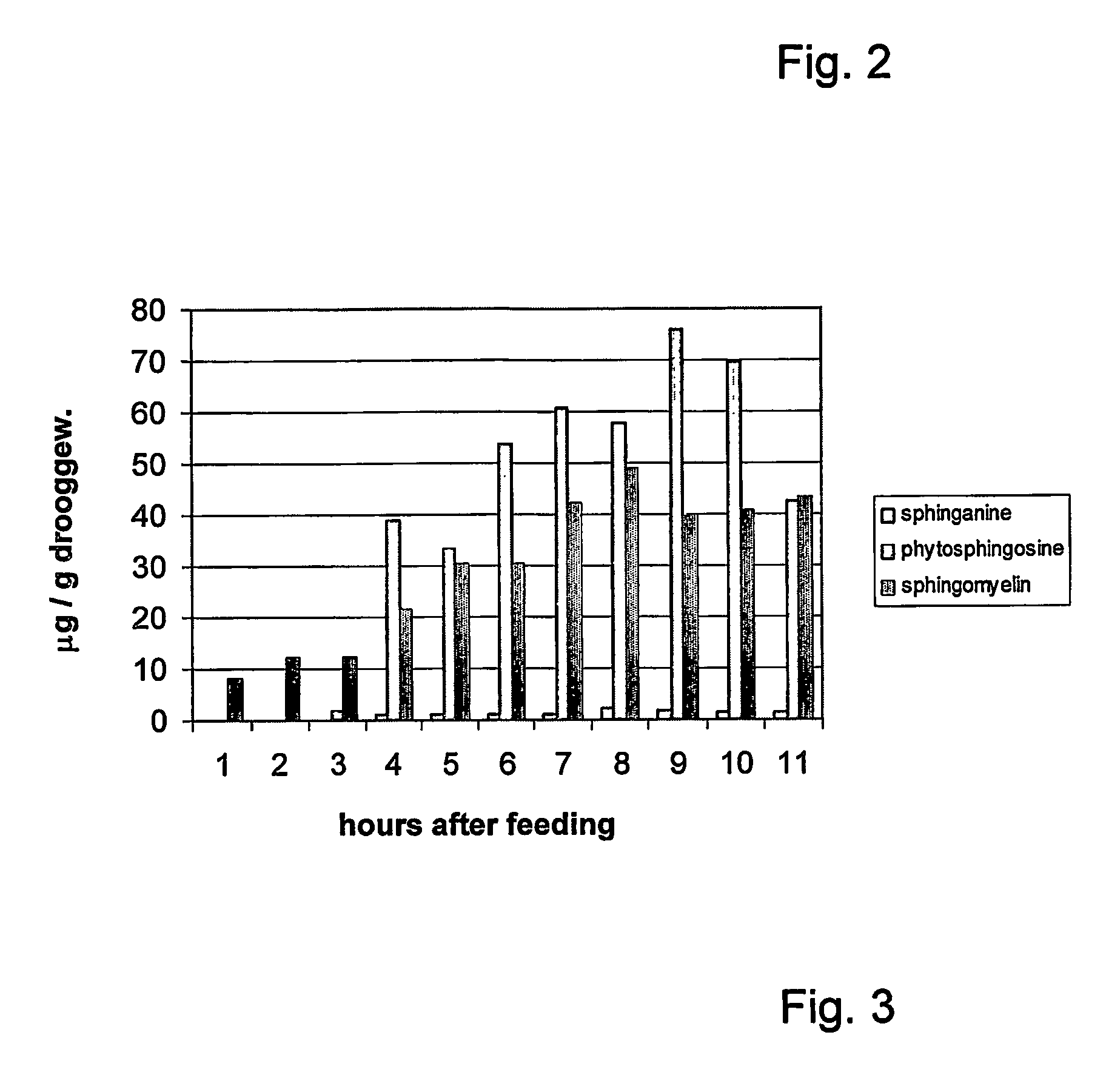Sphingolipids for improvement of the composition of the intestinal flora
a technology of sphingolipids and intestinal flora, which is applied in the field of sphingolipids for improving the composition of intestinal flora, can solve the problems of killing useful and essential microorganisms in the intestinal flora by antibiotics, and allergic reactions of certain individuals to certain antibiotics, so as to achieve effective killing and difficult control
- Summary
- Abstract
- Description
- Claims
- Application Information
AI Technical Summary
Benefits of technology
Problems solved by technology
Method used
Image
Examples
example 1
Antimicrobial Activity of Sphingolipids
[0087] The antimicrobial activity of phytosphingosine, sphingomyelin, sphinganine acetate, sphingosine, glucosylceramide III and lysosphingomyelin was tested on agar plates, in liquid cultures, in the small intestine model TIM-I and in the large intestine model TIM-2 (EP 0 642 382 and U.S. Pat. No. 5,525,305).
[0088] The agar plates were prepared by dissolving or suspending the dry material in water and, after sterilization, pouring the agar out in Petri dishes according to standard procedures. The following media were used: Brain Heart Infusion Broth (BHI; Oxoid CM 225), Clostridium difficile Agar (DFA; Oxoid CM 601+SR 96), De Man-Rogosa-Sharpe Broth (MRS; Oxoid CM 359), De Man-Rogosa-SharpeAgar (MRSA; Oxoid CM 361), Plate Count Agar (PCA; Oxoid CM 325), Reinforced Clostridial Broth (RCB; Oxoid CM 149), Rogosa Agar (Oxoid CM 627), Trypton Soy Agar (TSA; Oxoid CM 131).
[0089] Reinforced Clostridial Blood Agar (RCBA) was prepared by suspending ...
example 2
Intestinal Transport of Phytosphingosine and Sphinganine
[0102] Because the sphingolipids need to be transported together with the food to the small and large intestines to be able to be active there, the transport of phytosphingosine and sphinganine in the stomach and small intestine model TIM-1 was tested. Also, the transport of phytosphingosine in a fistulated pig was tested after the animal had been fed with feed containing phytosphingosine (1 wt. %). In a fistulated pig, the small intestine is uncoupled from the large intestine so that the digested feed at the end of the small intestine can be collected.
[0103] Both in the TIM-1 model and in the in vivo pig model, the sphingolipids were transported in amounts sufficient to be able to have an antimicrobial activity in the large intestine.
[0104] On agar plates, as described in Example 1, Gram-negative bacteria are insensitive to sphingolipids, but, in those conditions, Gram-positive bacteria are killed only by phytosphingosine, ...
example 3
Antimicrobial Activity and Transport of Phytosphingosine and Sphinganine in TIM-1
Antimicrobial Activity in TIM-1
[0107] Since phytosphingosine and sphinganine have a strong antimicrobial activity on plate and in liquid cultures, the experiments were repeated in the small intestine model TIM-1, using 20 μg / ml of sphingolipid in the presence of Lactobacillus acidophilus (on Rogosa agar plates) and Clostridium difficile (on Clostridium difficile agar). After plating the lumen samples on the respective agar plates, there appeared to be no demonstrable antimicrobial activity.
[0108] Probably due to the lumen composition (other lipids, proteins, protein fragments and cholic acids) or due to adsorption to the TIM-1 system itself (see below), the sphingolipids are freely available in concentrations too low to be antimicrobially active. But the sphingolipids are transported in the TIM-1 system to a sufficient extent (see below).
Transport
[0109] To investigate whether sphingolipids from t...
PUM
| Property | Measurement | Unit |
|---|---|---|
| Composition | aaaaa | aaaaa |
Abstract
Description
Claims
Application Information
 Login to View More
Login to View More - R&D
- Intellectual Property
- Life Sciences
- Materials
- Tech Scout
- Unparalleled Data Quality
- Higher Quality Content
- 60% Fewer Hallucinations
Browse by: Latest US Patents, China's latest patents, Technical Efficacy Thesaurus, Application Domain, Technology Topic, Popular Technical Reports.
© 2025 PatSnap. All rights reserved.Legal|Privacy policy|Modern Slavery Act Transparency Statement|Sitemap|About US| Contact US: help@patsnap.com



